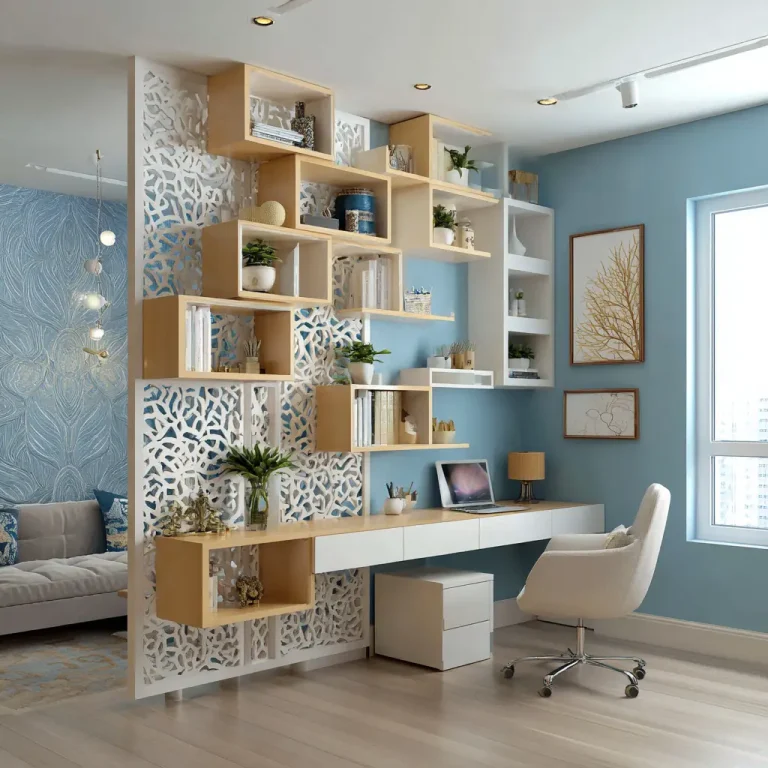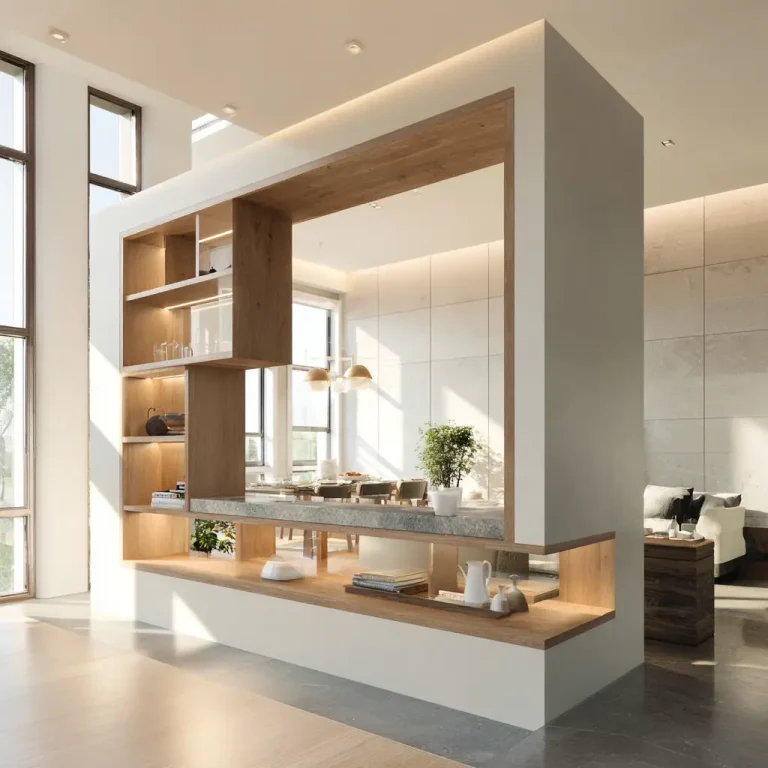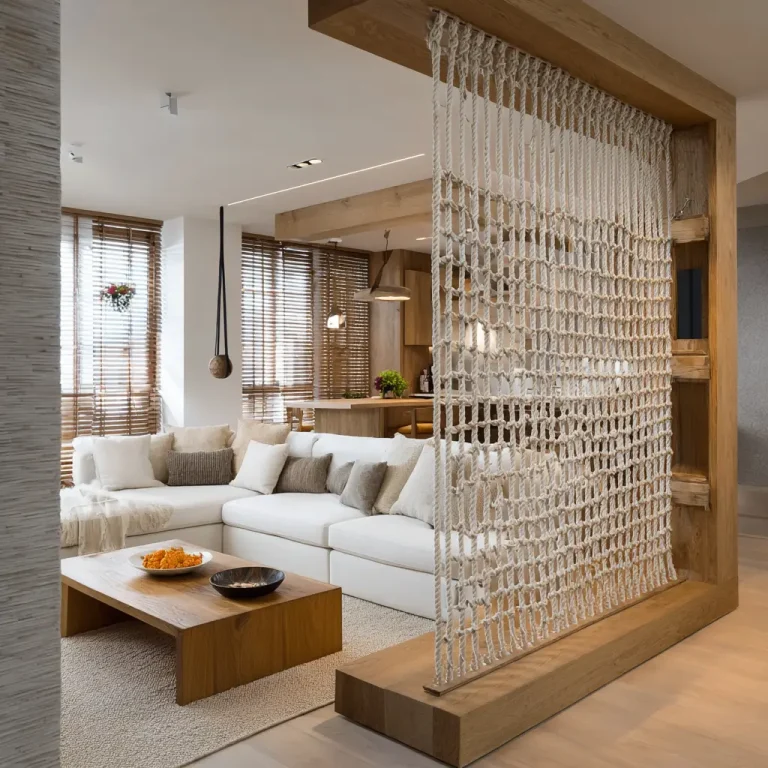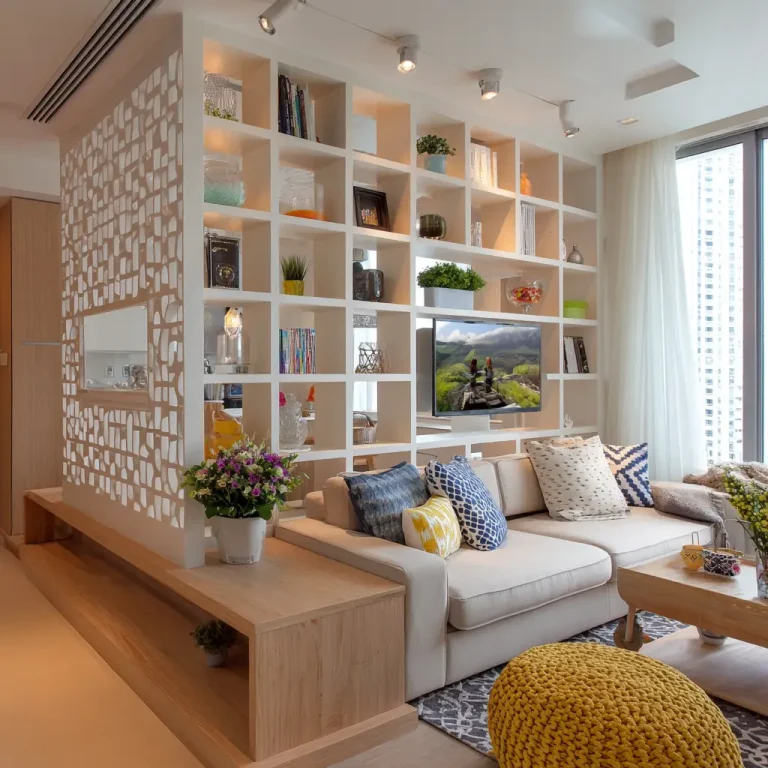15 Home Office Living Room Partition Ideas That Actually Work
Working from home sounds great—until your Zoom call gets hijacked by someone watching TV ten feet away. If you’re using your living room as a home office, you’re not alone. But how do you create a dedicated workspace without building new walls?
Here are 15 creative and practical partition ideas to help you separate your work zone from your lounge zone. Whether you’re in a tiny apartment or just trying to define your space better, there’s something here for everyone.
1. Bookshelves as Room Dividers
A tall bookshelf can serve double duty: it divides your space and adds storage. Open-backed options keep things light while still providing a sense of separation.
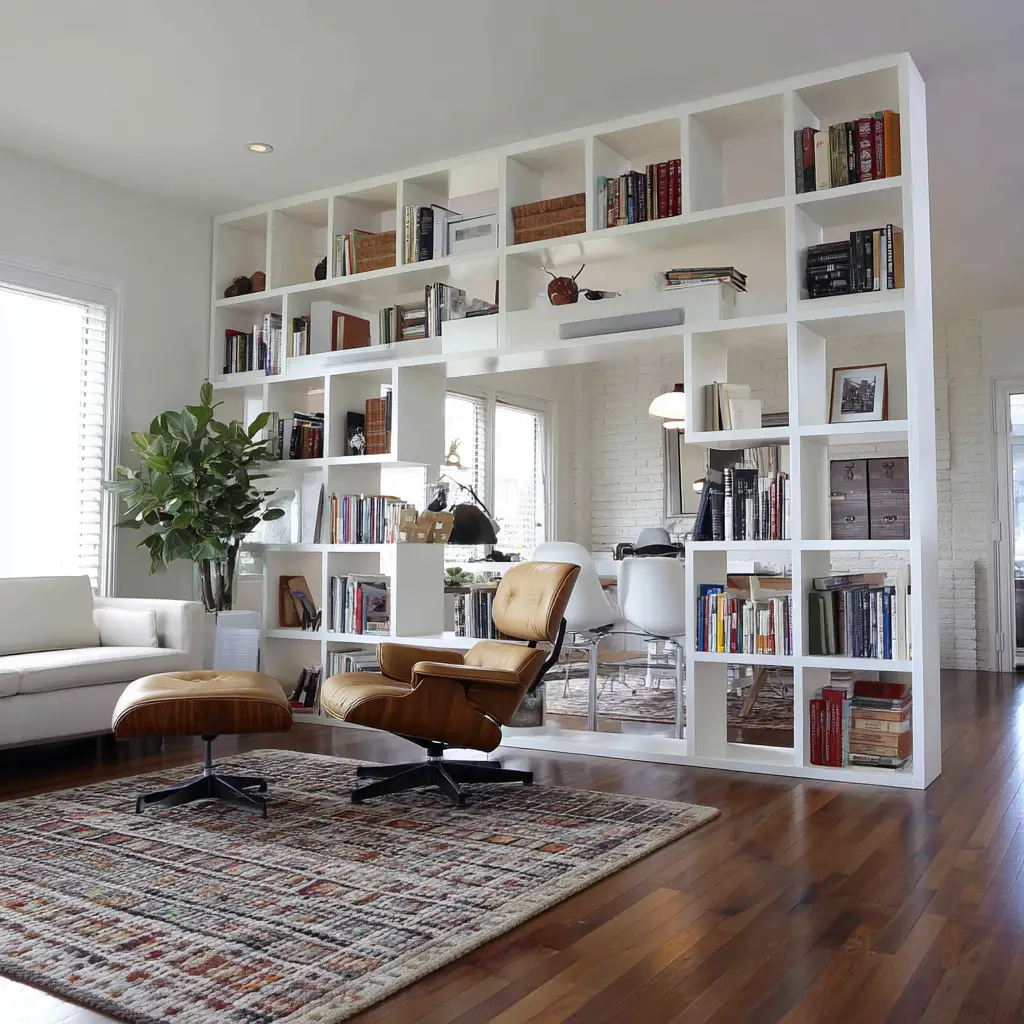
2. Sliding Doors or Panels
Install sliding panels or barn doors to physically close off your office space when needed. It’s a bigger commitment, but great for people who need real boundaries between work and life.
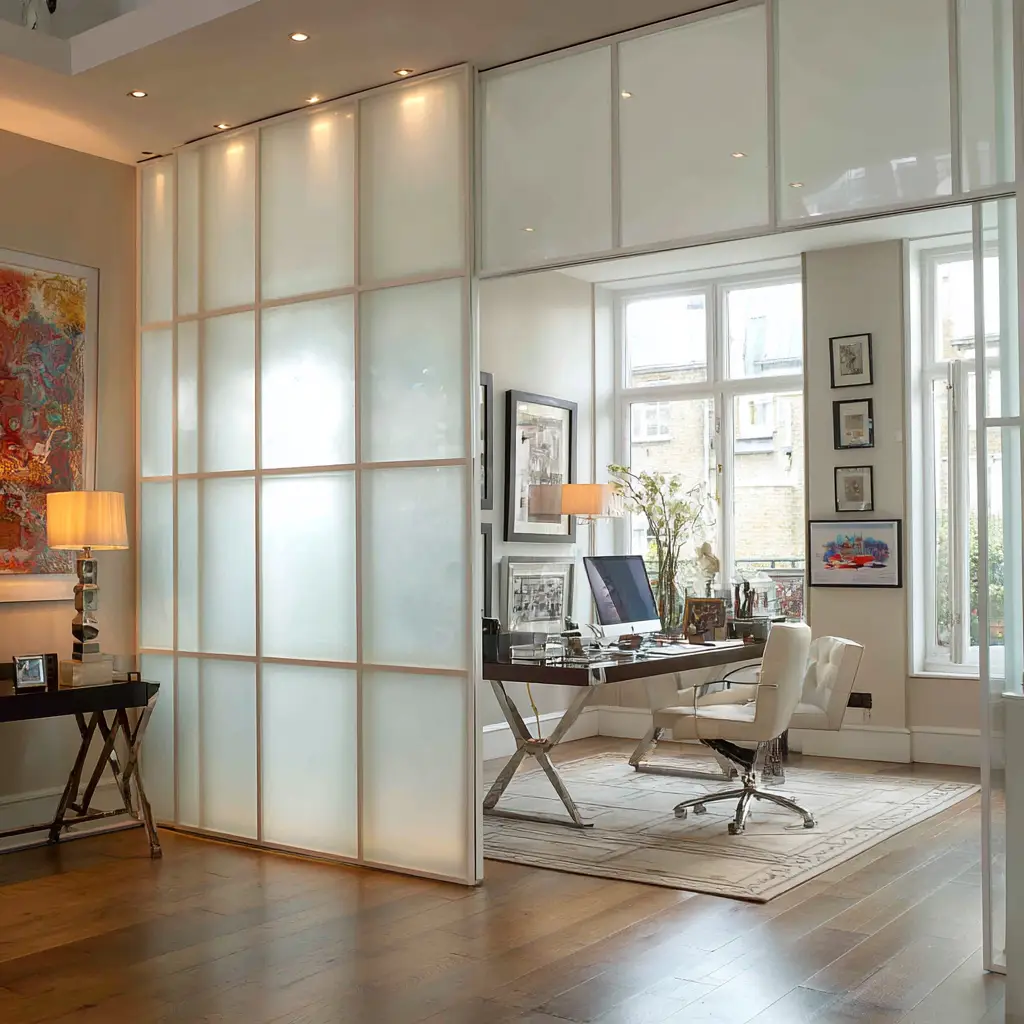
3. Curtain Dividers
Hanging a curtain is one of the simplest ways to separate your workspace. It’s inexpensive, flexible, and easy to pull back when the workday is over.
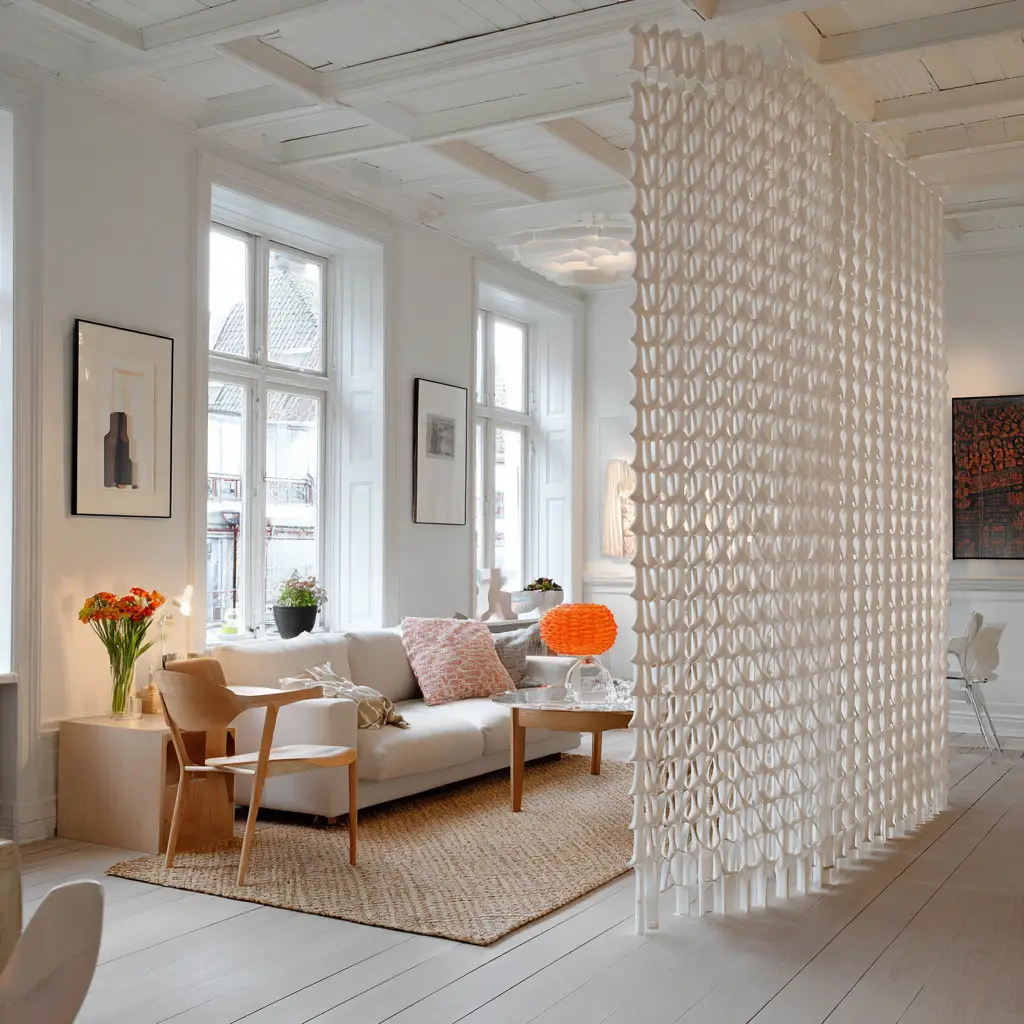
4. Foldable Screens
Room divider screens are classic for a reason. Fold them up when you need the space back or move them around easily as your needs change.
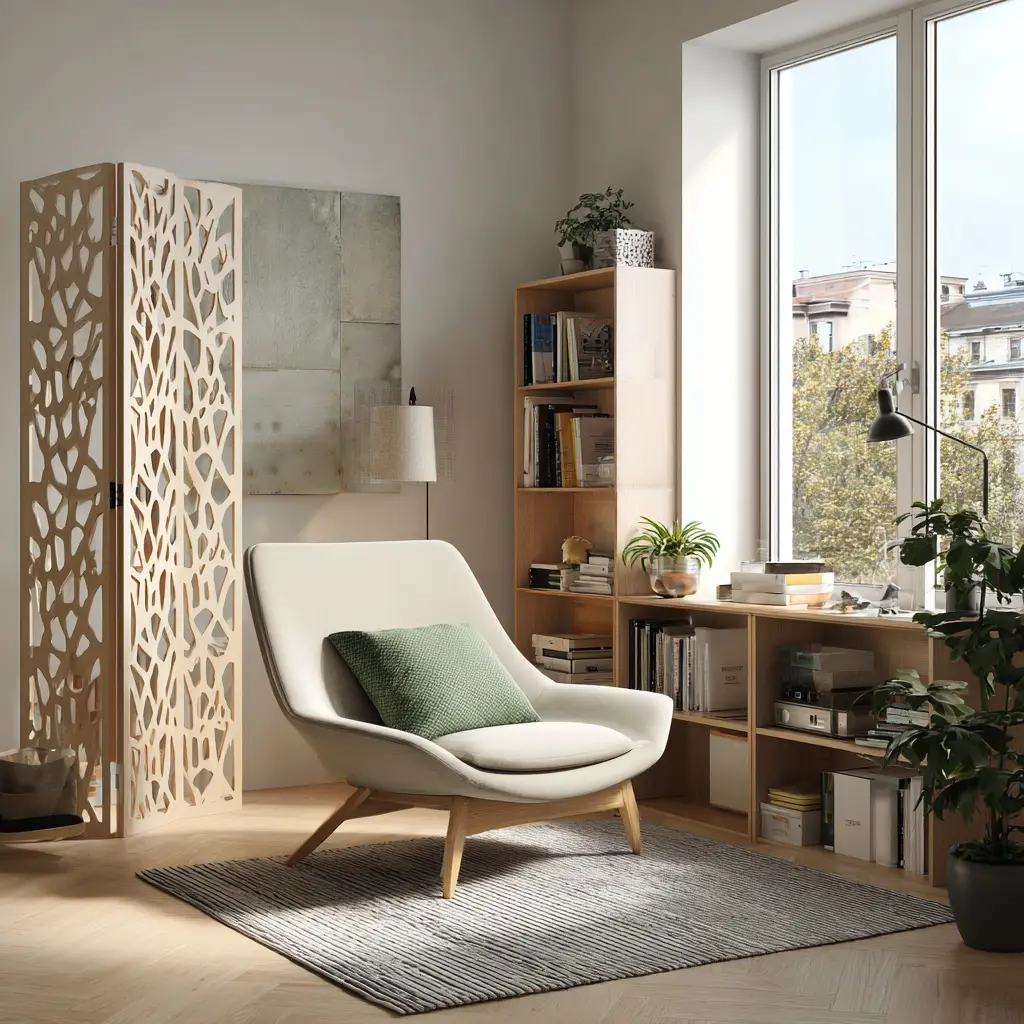
5. Plants as a Natural Barrier
Tall plants like fiddle leaf figs or bamboo can visually divide a space while bringing in a bit of calm and greenery.

6. Area Rugs to Define Spaces
No walls? No problem. Rugs help define zones and create psychological separation. Use one under your desk and another under your sofa.
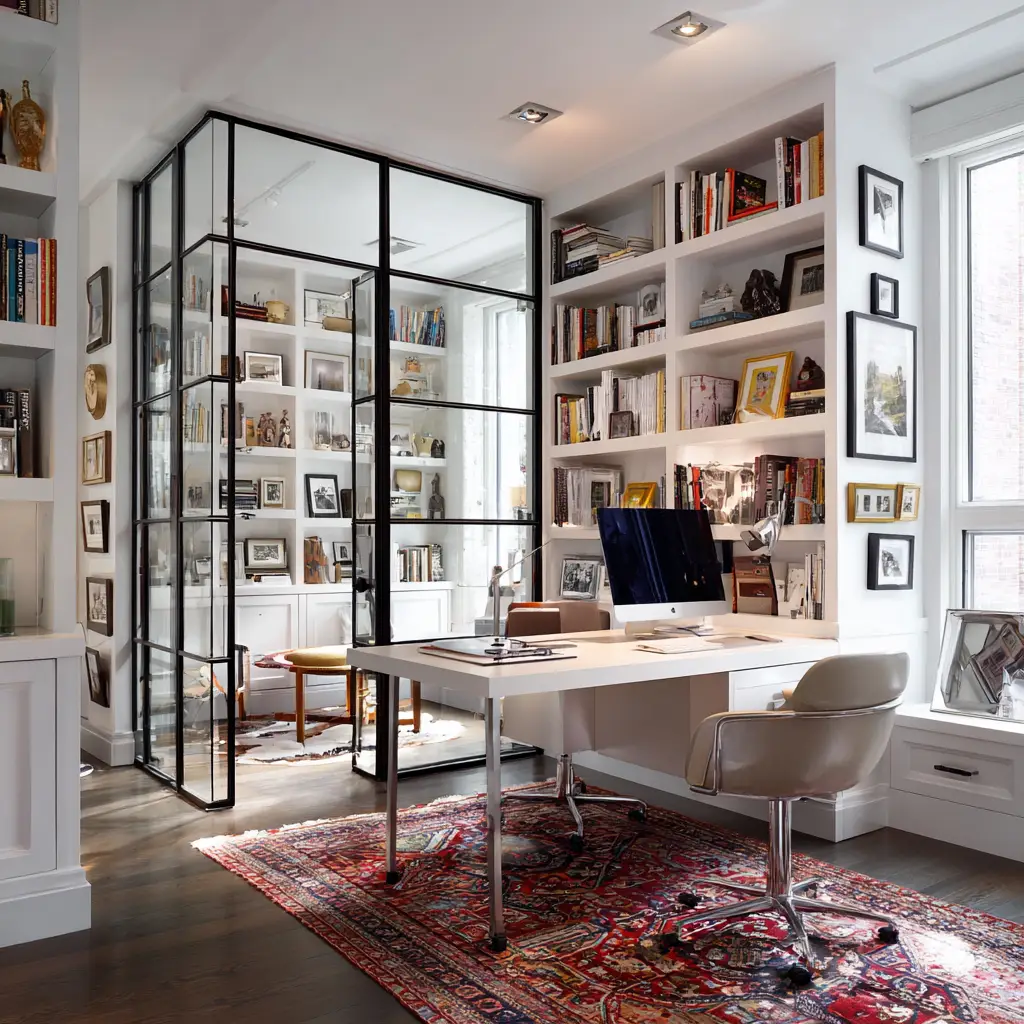
7. Furniture Arrangement
Sometimes just turning your desk to face away from the couch can do wonders. Backing furniture against each other creates natural “rooms.”
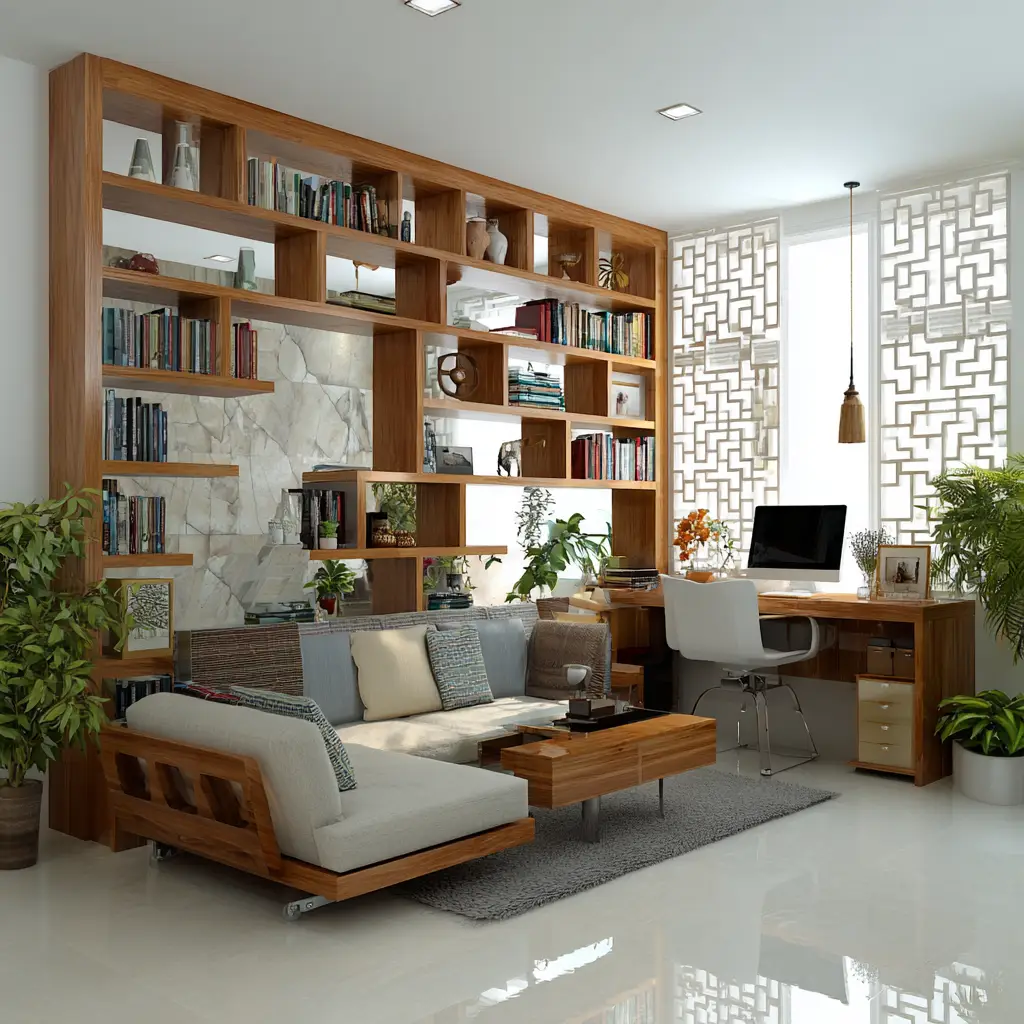
8. Tall Cabinets or Storage Units
Use tall, narrow storage pieces to separate areas while keeping things functional. Bonus: hide all the office clutter at the end of the day.
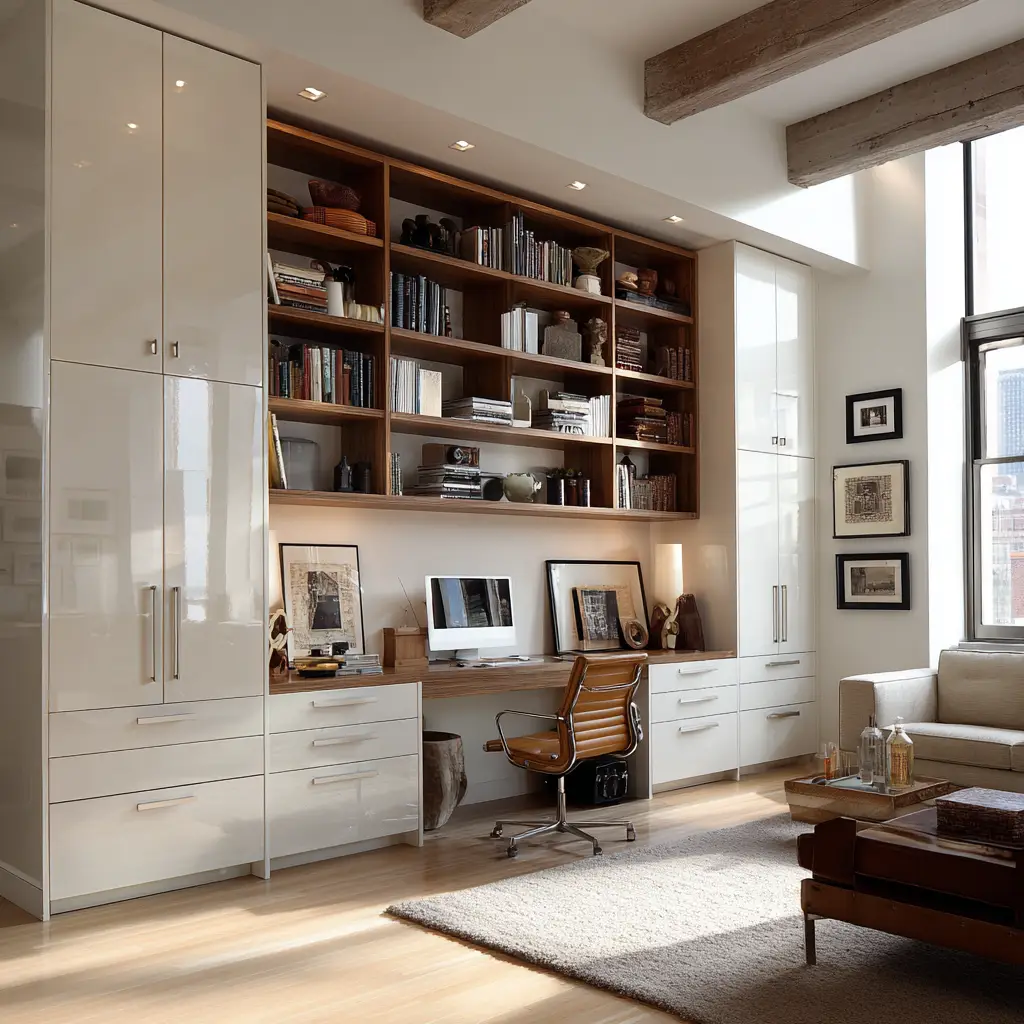
9. Glass or Acrylic Panels
If you like the open look but still want some boundary, glass or acrylic dividers give you separation without blocking light.
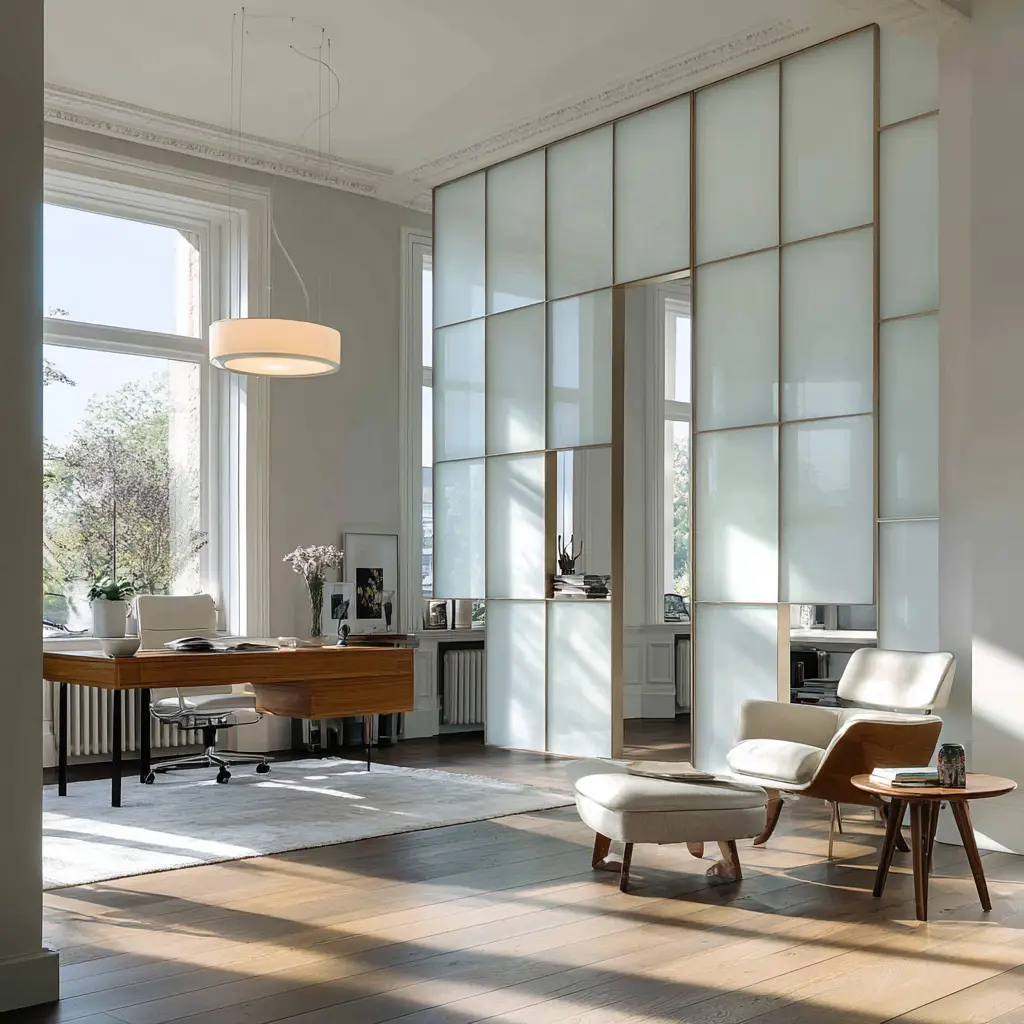
10. Pegboards or Grid Walls
Get creative with vertical partitions like pegboards. You can hang supplies, décor, or even small plants to make the divider feel personalized.

11. Two-Tone Wall Paint
Paint one area a different color to visually mark your workspace. It’s subtle but surprisingly effective for shifting your mindset.
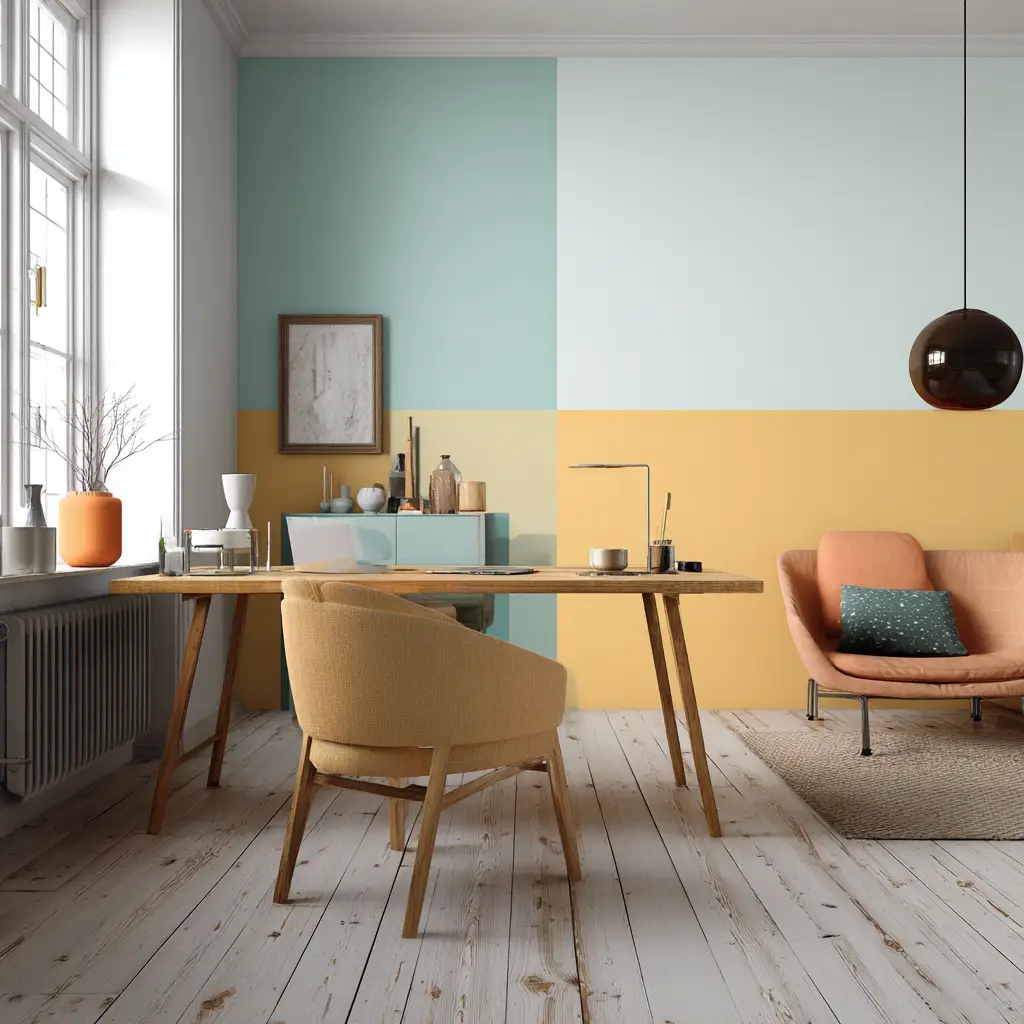
12. Elevated Platforms
If possible, raise your desk area slightly with a platform or stage. The height change helps distinguish the workspace from the rest of the room.
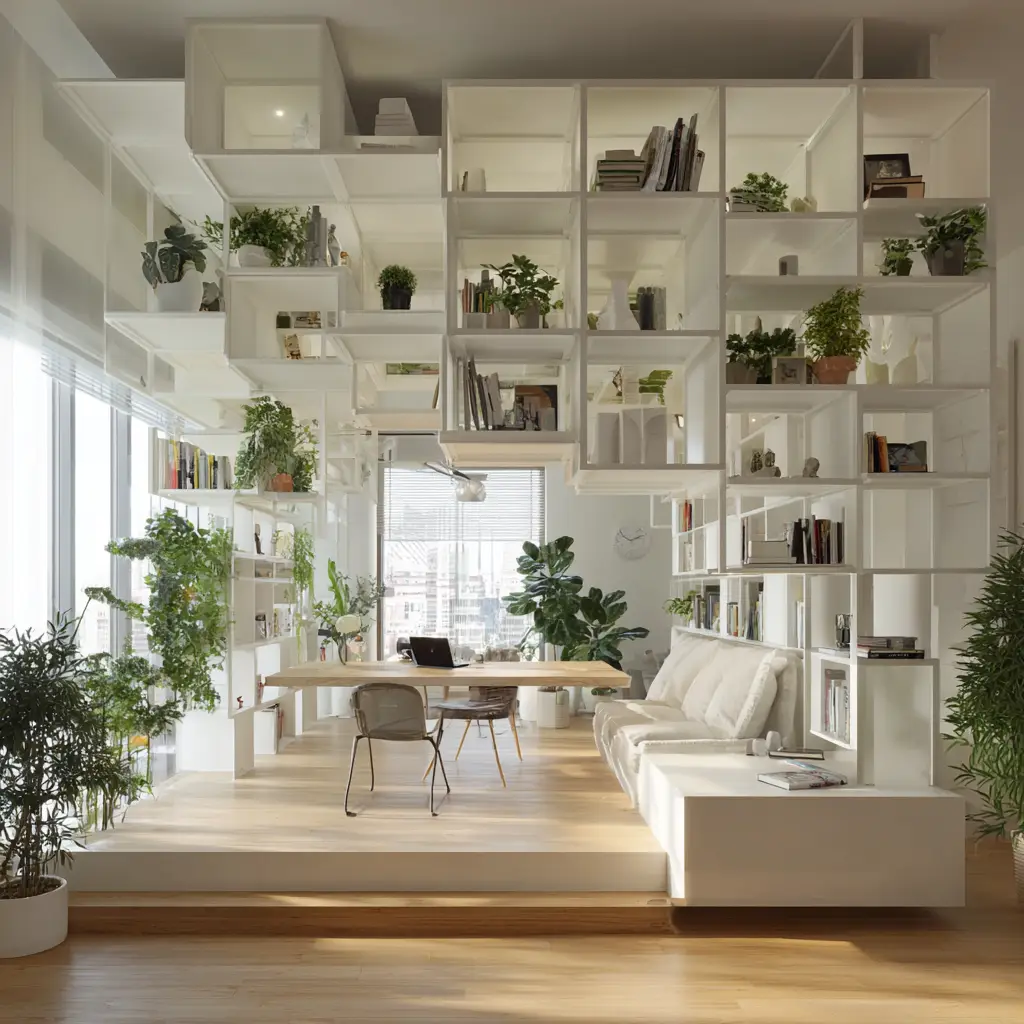
13. Ceiling-Mounted Dividers
Hanging partitions from the ceiling—like panels, beads, or fabric—can visually break the space without taking up floor room.
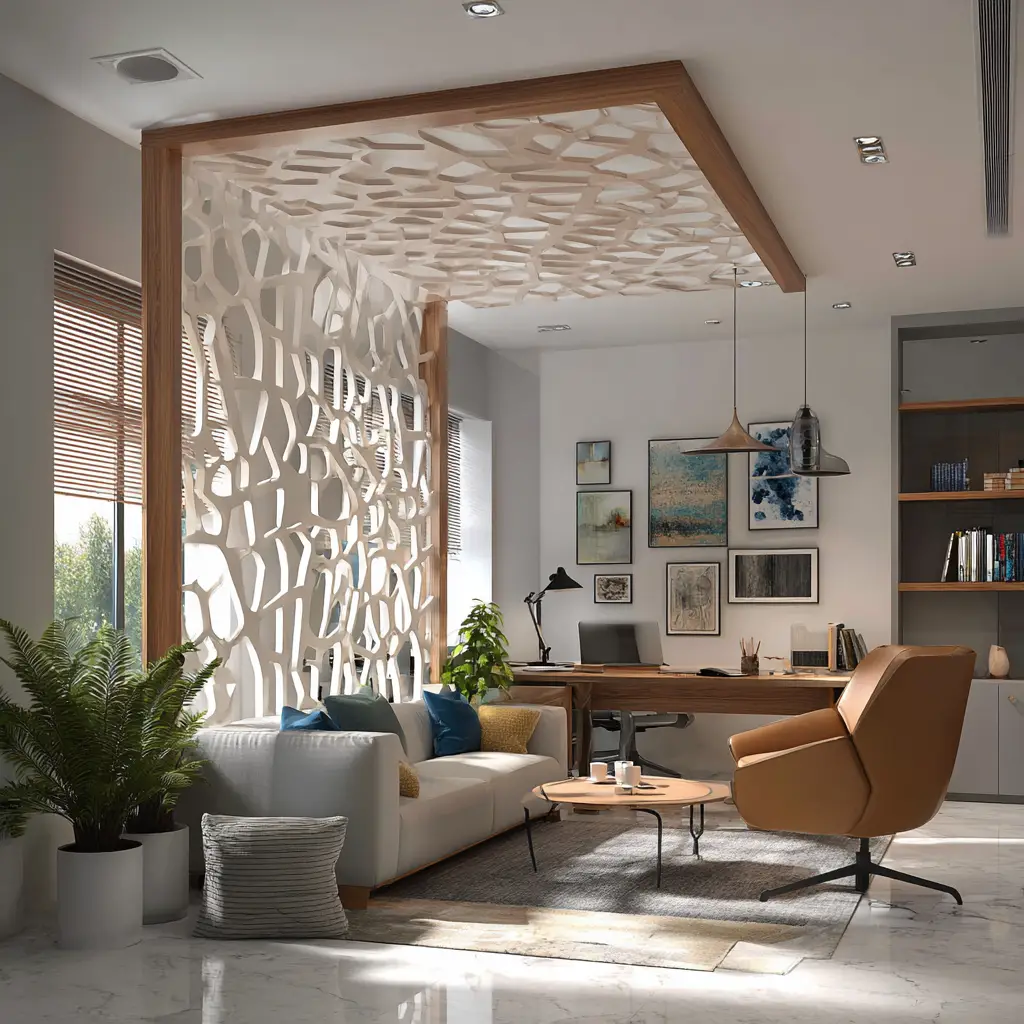
14. French Doors or Pocket Doors
If you’re ready to invest a little more, installing French or pocket doors between your living room and home office can be both elegant and effective.
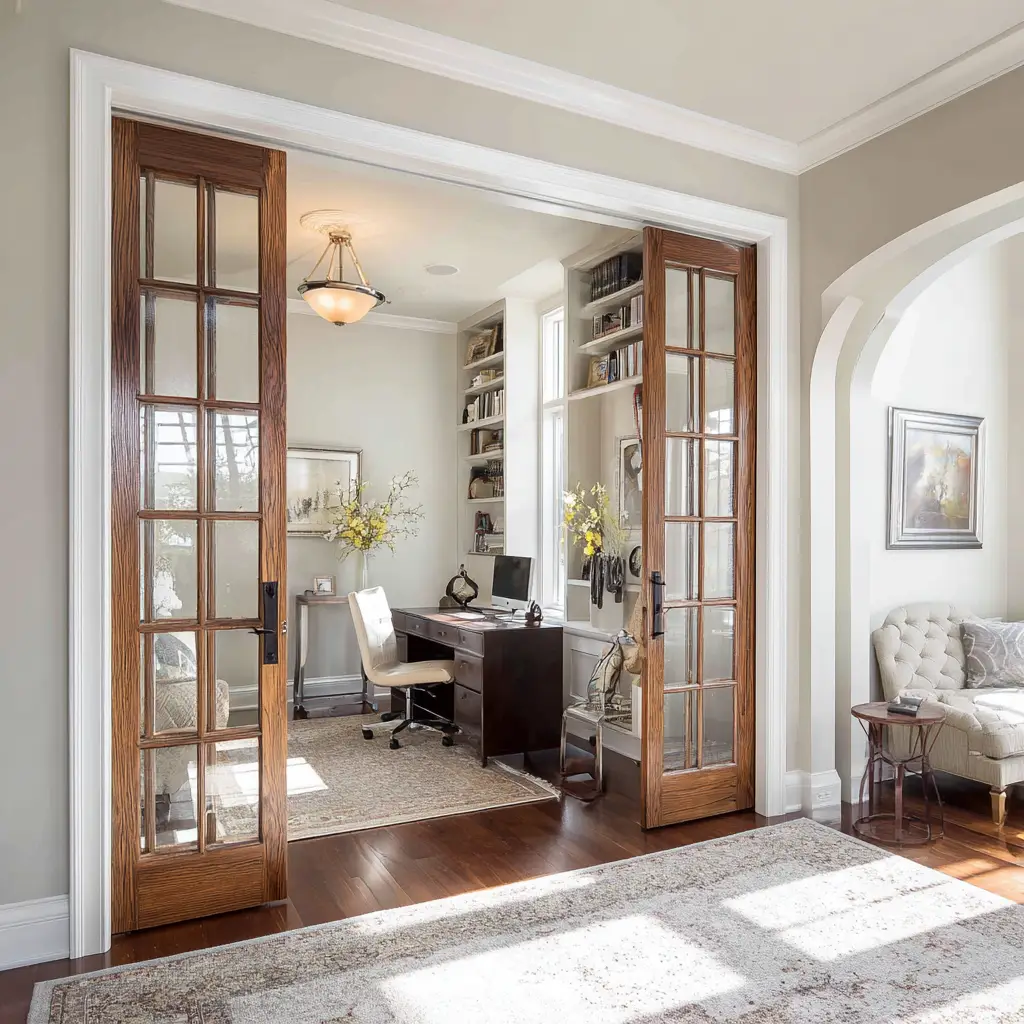
15. Acoustic Panels or Divider Walls
Working with noise? Sound-absorbing panels can double as partitions and help with audio clarity during calls.

FAQs
How do I choose the best partition for a small space?
Go for something lightweight and multifunctional, like a curtain or open bookshelf. Flexibility is key in tight quarters.
Will a partition make my living room feel smaller?
Not necessarily. Open or see-through dividers like glass panels or shelving let light flow through and keep the room from feeling cramped.
What’s the most budget-friendly partition option?
Curtains and foldable screens are among the cheapest. You can even DIY some options using fabric and tension rods.
Can I soundproof my home office in the living room?
Complete soundproofing is tough without actual walls, but acoustic panels, thick curtains, and rugs can all help absorb noise.
How do I make the space still feel cohesive?
Stick to a common color palette and style. If your workspace looks like an extension of the living room, it’ll feel more natural and less jarring.
Conclusion
You don’t need a dedicated room to have a functional home office. With a little creativity—and the right partition—you can carve out a productive workspace right in your living room. Whether it’s a curtain, a shelf, or a few plants, the key is to create enough separation to mentally and physically shift into work mode.
